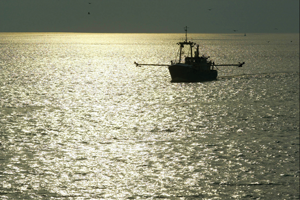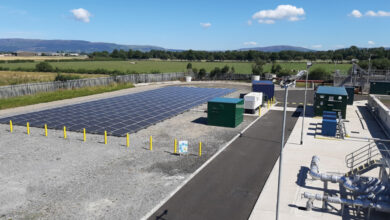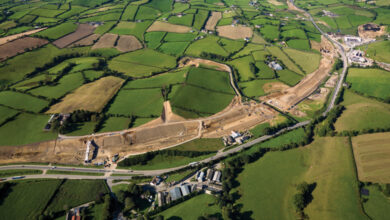North Sea supergrid
 North Sea states are making progress in plans for a connected offshore grid, due to strong government support.
North Sea states are making progress in plans for a connected offshore grid, due to strong government support.
Political will is crucial for developing offshore energy, European energy representatives have emphasised.
As part of the Open Days conference, agendaNi attended a seminar on supergrids in the North Sea and English Channel, hosted by the Norwegian mission to the EU. While not a member state, Norway co-operates closely with the EU on energy and produces as much oil as the entire union. In contrast, it generates virtually all its electricity from hydro plants.
Friends of the Supergrid Chief Executive Ana Aguado Cornago said the technologies for supergrid projects are available right now but the main barriers are regulation and the lack of political will. The North Sea political agreement on supergrids (December 2010) had encouraged innovation and she expected other member states to follow UK and Germany if they took the lead.
A European approach was needed as some coastal countries had less wind than others, and relying on their own waters would put them at a disadvantage. Energy had not been “very attractive” as a career for several years but Cornago was pleased to see more graduates entering the sector.
Pension funds were also increasingly interested in investment in the grid, as they were regulated and a secure. She recognised the importance of compensation to protect the environment, contrasting the overdevelopment along the Spanish coast with conservation in the Netherlands. That said, objections held up a Spain-France interconnector for 25 years.
Kees Visser, a councillor from the Dutch port of Den Helder, explained how it would take up the opportunity of offshore wind. The port already serves the North Sea oil and gas fields, has an onshore turbine construction industry, heliport and a turbine test site, and is generating R&D at the Netherlands Maritime Campus.
Specific research areas include blade construction, remote control and the optimal grouping of turbines: “Applied research, innovation and product development for offshore wind offers a new high quality employment. It also develops secondary and higher vocational education for the offshore sector.”
However, the port’s expansion has also damaged the environment, by building on a nature reserve. For compensation, it is required to set aside land for a new habitat. Not surprisingly, Den Helder’s entrepreneurs recommend the clustering of the entire supply chain around ports.
Visser warned that European research needed more co-ordination as many projects duplicated each other, while Chinese and South Korean technology moved forward. He wanted to see “vision towards innovation,” citing the transformation in IT, from supercomputers to the smartphone.
“I think you can’t call a $1 billion industry a left-wing hobby anymore these days,” said Visser (a member of the liberal People’s Party) and he expected wind to become self-financing in 10-15 years.
European Renewable Energies Federation Director Dörte Fouquet was adamant that Europe needed distributed and decentralised renewables. Independent power producers generated more than
90 per cent of German renewable energy. The European Commission and several member states did not understand the need for “energy system change” and still preferred central models.
“We cannot choose and pick some people,” she added, emphasising the need to recognise the future potential of ocean, wave and tidal energy. Denmark stood out as a success story, as it treated renewable energy as industrial policy (i.e. not just against climate change).
Case study: Ostend
The Belgian port of Ostend has opened up two terminals to offshore renewables, including foundation construction. Six foundation structures (each weighing 2,800 tons) have been built onsite by local firm C-Power. The inner port offers a direct rail connection and a
60 hectare open area for future green energy development. The 18 hectare Greenbridge science park is a joint project between the port and Ghent University.





